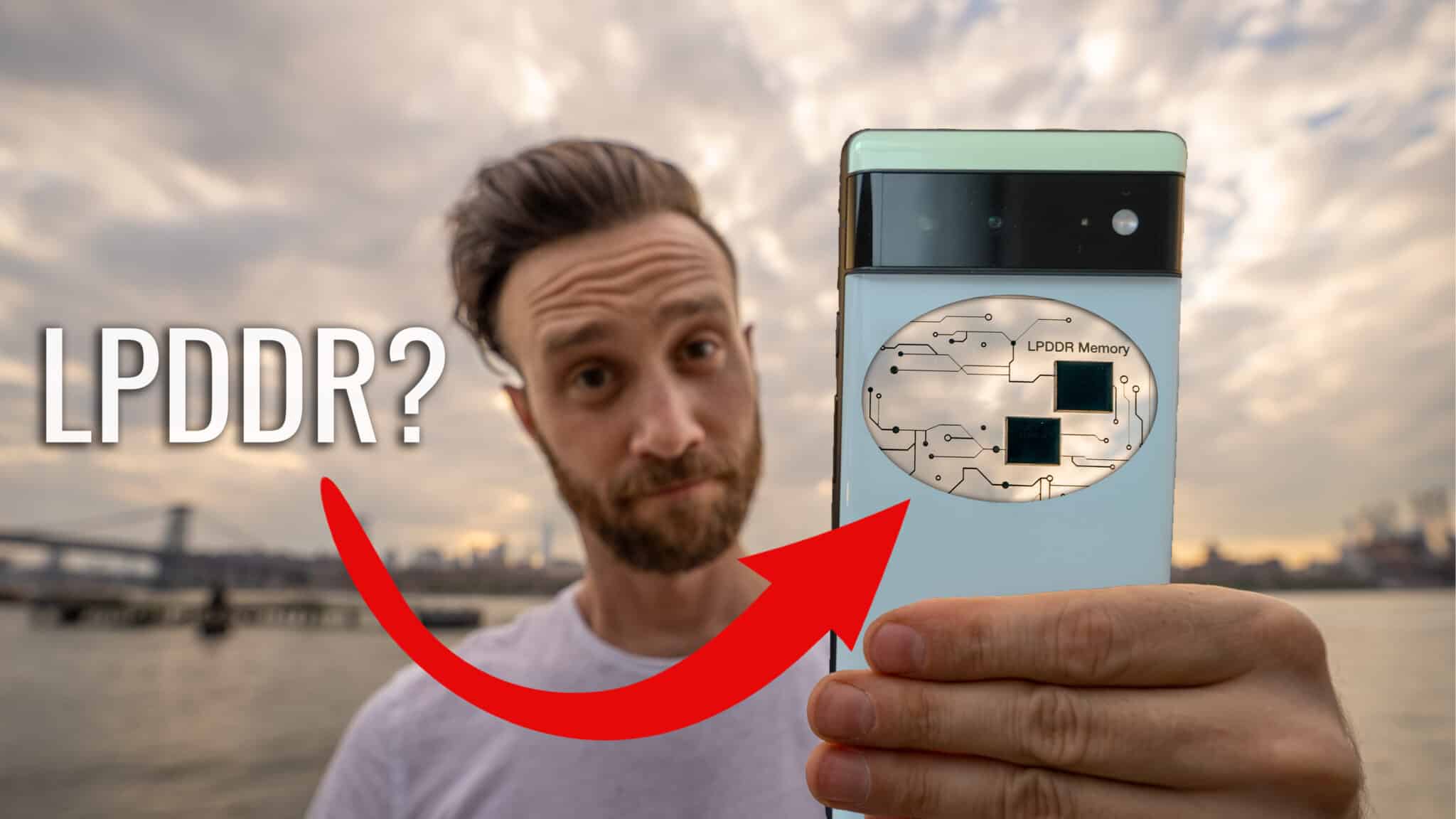What is 5G? (& How It’ll Actually Change Your Life)

Chances are you’ve heard the term 5G at some point already. It’s being mentioned a lot right now.
And, honestly, there’s a good reason.
5G is going to have a pretty big impact on our daily lives and so, of course, all the carriers want to show what they’re doing with it and are pushing it more and more.
The truth is though that 5G is complicated and there is a lot to talk about when trying to explain it.
So, in this episode of Decodr, where I break down a new piece of tech every week, let’s dive into all of what 5G is, the benefits of it, and its future.
Now, since Qualcomm is one of the leaders in all the things 5G and I had access to a plethora of their 5G tech while there, I figured who better than to partner with on this video to do a deep dive into 5G.

What is 5G?
So firstly, what is 5G? Well, to put it in overly simple terms, 5G is short for the fifth-generation of wireless technology and it follows the previous four that preceded it including, of course, 4G–what your phone is most likely running on right now.
With each generation, we received new major benefits along with the new technology standards that each introduced and 5G will be no different.
5G Frequencies
Now, when most people talk about 5G, they usually begin with talking about radio frequencies.

One of the major benefits of 5G is that the technology will be deployed on a much larger swath of radio frequencies than our current 4G networks (this isn’t the only thing that makes 5G what it is, but we’ll get into that in a sec).
Now, there are various radio spectrums that are being used for 5G and it’s broken up into three tiers.
High-Band 5G (mmWave)

High-Band: which is the frequencies above 24Ghz essentially (sometimes referred to as mmWave since the distance between each wavelength is around a millimeter in distance). These frequencies are much higher than the current ones we use for 4G and this comes with some pros and cons.

Firstly, because of the higher frequency of the transmissions, we can get much higher data speeds (this is the tech being used whenever you see those crazy 2bps speeds on social media). The downside to this though is that because of how high the frequencies are, they are prone to interference.

mmWave bands aren’t able to penetrate walls very well, and even things like your hand can block them. Because of this, there were a lot of people saying that it would be impossible to use these frequencies in a normal use case.

Qualcomm though managed to defy the naysayers and got mmWave to work by using a bunch of clever tech including small antennas in multiple places around a device so no matter where your hand is–as even your hand can block mmWave–there is always one exposed, ways of using beamforming to bounce the signals around corners and off of objects, etc.
In fact, Qualcomm is the only company that has been able to crack the code of mmWave and get it to actually work in everyday settings so far period. Kinda nuts.
Mid-Band 5G (Sub6)

The next tier is mid-band, sometimes referred to as “Sub-6”. These frequencies tend to sit under 6ghz (hence the sub-6 name). They are lower in frequency so they can’t quite hit as fast of data speeds but are still a decent amount faster than 4G while still being able to penetrate walls better and just have a further reach.
Low-Band 5G

Then finally, we have what the industry calls low-band. These are generally under 2ghz or so and actually include some of the frequencies that 4G is currently running on.

Qualcomm recently demonstrated a clever tech called Dynamic Spectrum Sharing (that again, only they so far seem to have deployed) that lets carriers use the same frequency for both their current 4G users and 5G at the same time–dynamically switching to whatever the users might need–making it easier for carriers to roll out the low band 5G frequencies faster.

Regardless of which frequencies each carrier is currently using for 5G (T-Mobile and AT&T with low-band and mmWave, Verizon with mmWave at the moment, Sprint with Mid-Band, etc.) they will all eventually launch solutions within each of the three tiers ideally and combine them together.
How All the 5G Frequencies Work Together
A good example of how this would work is having mmWave dotted all over a high-density area like a city center and when you are near those you’ll get the highest speeds available, then you’ll have mid-band in those same areas and reaching out a lot further supplementing that and still giving much higher speeds than we currently see, and then we’ll have the low band spectrum to reach out to more rural areas, etc.
And it’s not as simple as whichever frequency area you’re in, you’ll get those speeds since they will all work together. Let me give you a quick example.

Generally speaking, your coverage is determined by your phone, not the tower. The tower itself projecting out a mid-band higher speed signal, for example, will reach your phone thanks to the fact that that tower has enough power to push that signal over a large distance but your phone, might not be able to get its own mid-band upload signal back to the tower simply because it doesn’t have the power to send it as far.

In this scenario, the low-band frequency can come into play and be used by the phone to send the upload signal back to the tower thanks to that frequency being able to travel much further with less power, and then tower can use the faster mid-band frequency to send all of the downstream data back to the phone (the arguably more important speed-wise transmission anyway) and viola, you might technically be in a low-band coverage area, but you’re benefiting from the much higher download speeds of mid-band, etc.

This also goes to show why it’s so important as to what chipset is in the phone since it needs to be able to handle all of this trade-off that will constantly be happening, again, since Qualcomm is the only company out there at the moment that can even use the mmWave high-band, sub-6 mid-band, and low-band all on the same chipset, that’s probably the one you’ll have in your device in order to take advantage of all the frequencies 5G will ultimately employ.
OK, enough talk about frequencies. I mean, they are a big factor in providing the speeds and bandwidth that we need for 5G absolutely, but they’re not the entire story.
What Else Makes 5G?

Take the 600mhz (low-band) that T-Mobile is using or the 850mhz that AT&T is using, for example. As mentioned, these are the same bands they both use for LTE so if frequencies were all there was to it, then how can this new network be 5G, right? Well, let me show you something.
Massive MIMO

This is a 4G base station, it has 4 antennas, and it uses a process called MIMO (which some of you who watched my earlier Decodr episode on WiFi 6 might remember as its a feature WiFi 6 sort of borrowed from the cellular world).

Well, MIMO stands for Mulitple Input, Multiple Output and basically, it has more antennas so it can send multiple streams of data to and from your 4G phone (that also has up to 4 antennas in it for the same reason).

This, though, is a 5G base station. And it has anywhere from 64 to 256 antennas. Because of that, they call this feature Massive MIMO–seems appropriate–and it is one of the key features that sets apart 5G from 4G.

Regardless of the frequency that the 5G signal is running on, it can use this massive amount of antennas to direct signal in much more precise beams to either increase the signal’s distance (coverage) or provide much better performance at the same distance over a 4G tower.
Geographical Spectrum Sharing
The amount of antennas also allows the same spectrum (or frequencies) to be used multiple times in the same area.

So some of the antennas can service Michael over here in this area, MJ over in this one, David here in the middle, and Jaime on the right all on the same band without the signals from each causing interference with each other. This translates to a lot more users getting a better signal at each cell site and the cell site being capable of handling a lot more users, as well.
Dynamic Sub-Carriers

Another key feature of 5G over 4G that helps 5G towers serve more users with much faster data is the fact that unlike 4G which has subcarriers of the frequency it uses cut into 15khz sections, 5G is inherently dynamic with these subcarriers. Don’t worry, I won’t get too deep into this here but suffice to say 5G can be more flexible with the subcarriers making it more useful.
5G Encoding vs 4G Encoding

And lastly for key differences, there is an encoding difference for the data in 5G vs 4G. Basically, this means that the format the data is being sent and received in by the tower and you’re 5G device is just more optimized so it delivers more data per transmission which translates to faster speeds (think of it like an H.265 encoded video vs an H.264 one for an overly simplified example at least).
NSA vs SA 5G Networks

Now, something else we need to talk about really quickly that is going to have a huge impact on what 5G can do in the future is the difference between NSA, or Non-Stand-Alone, and SA, or Stand-Alone, 5G.
Right now, in the US and most places, the 5G networks here will start out as NSA networks. What this means is that even though the towers and end-user devices (like your phone, for example) have been upgraded to use these 5G features, the core network (the part of the network comprising the infrastructure carrying your data from the tower to the internet at large) is still based on the 4G standards.
This means we can’t quite get all of the potential 5G has to offer, but it is much faster to deploy, of course.

Benefits of 5G
Eventually, though, the networks will start to become stand-alone (SA) and that means that from the end-user all the way to the internet will be upgraded with new 5G technology and it’s then that we’ll see the highest speeds and next major benefit of 5G we need to talk about quickly: the lower latency.
Speed and Lower Latency
Now, we aren’t seeing it just yet, but besides the speed, the much lower latency (or the time it takes for data to go from your device out to the internet and back) will be a huge benefit of 5G (again once carriers move to more SA systems that I just mentioned).
Qualcomm has mentioned latency under 1 millisecond. This combined with the speeds is what will make for truly unique benefits from 5G, like future-changing benefits. Wait, hear me out.
The speed combined with the low latency means that eventually, you can access data from the cloud faster than you could if it was on your own device (think unlimited storage that works and acts like on-device storage), the offloading of processing power from the device to cloud servers (think cloud gaming on any device since the hardware in that device doesn’t matter as it could all be run off of much more powerful cloud servers).
IoT and self-driving will take a massive leap forward, too. Connected devices and self-driving cars, to be able to communicate with one another and even cloud servers almost instantly (which especially in the case of the cars, I’m sure you can see why that’s needed for them to become safer and more useful really).
Eventually, everything around us will just become smarter and high-speed data will flow like electricity currently does–it’ll become commoditized and just expected.

When Will We See 5G?
So, how far off from this crazy future I’m painting are we right this moment? Well, according to Qualcomm, closer than I even thought.
Already over 40+ carriers around the world have begun deploying their 5G NSA networks (rolling out a lot faster than their 4G versions did), but Qualcomm told me that they already know of carriers launching those full stand-alone 5G networks coming as early as 2021.
I don’t know about you guys, but I’m so ready.











